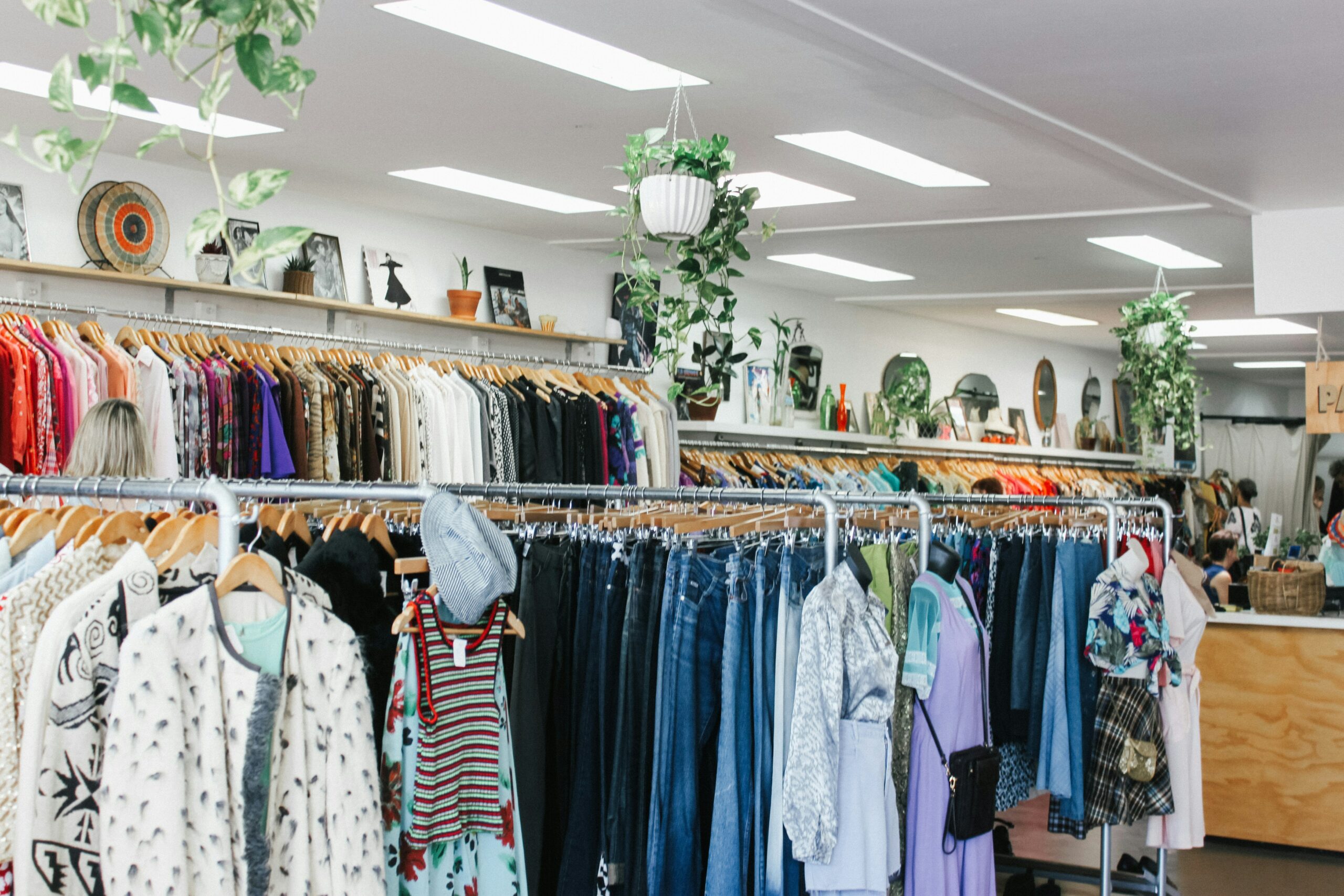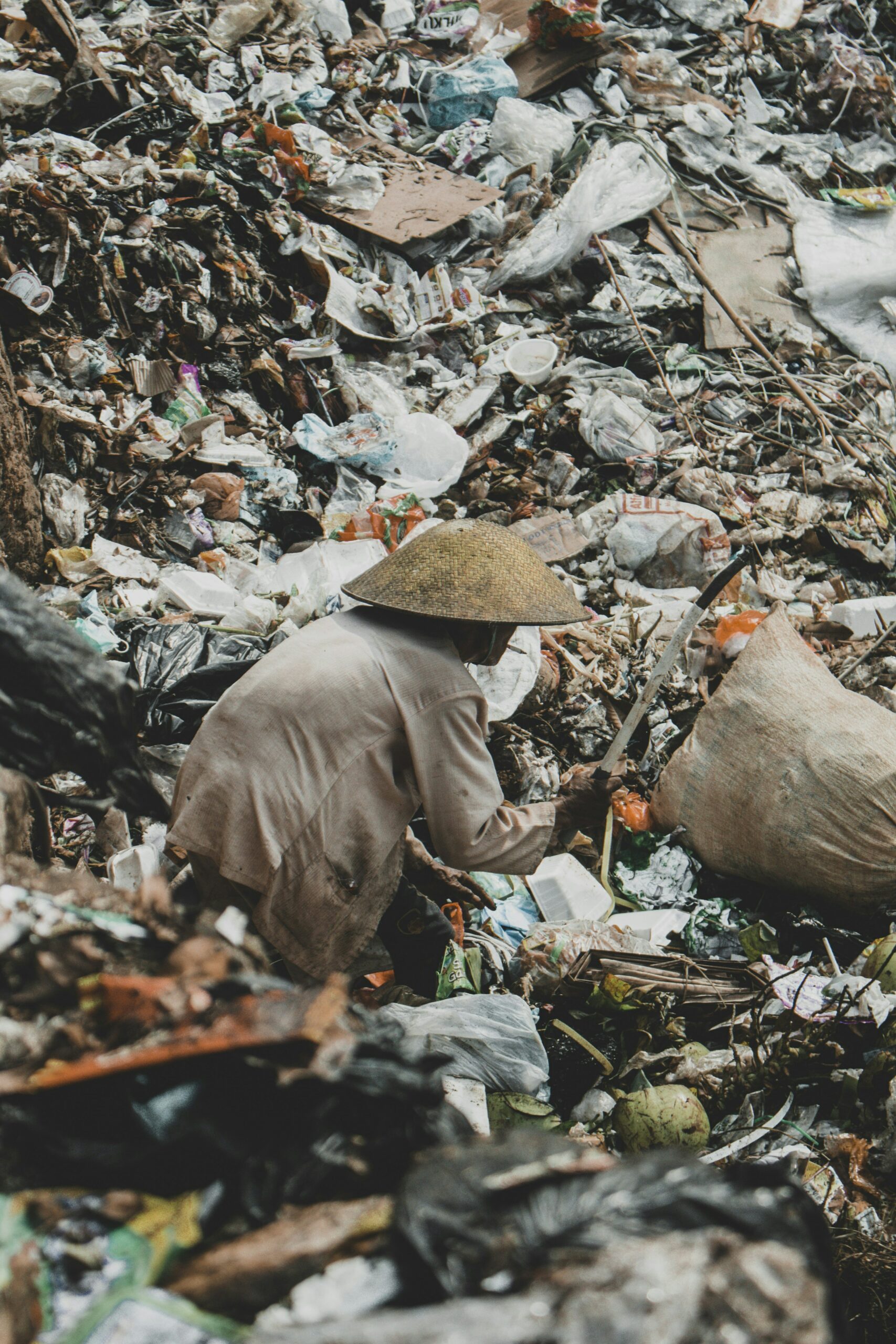 Photo by @prudenceearl on Unsplash
Photo by @prudenceearl on Unsplash
The Myths and Realities of Recycling and Thrifting in Addressing Fashion Overproduction
In recent years, recycling and thrifting have been hailed as key solutions to the fashion industry\’s overproduction crisis. While these practices offer some environmental benefits, they are far from the panacea they are often portrayed to be. Before you come at us, please note that we are huge fans of thrifting and other post-consumer recycling efforts—it\’s just not enough! By presenting the facts, we hope to urge consumers to do even more to help offset the damage caused by producing billions of garments each year that cannot possibly be absorbed.
The Limitations of Recycling
We\’ve heard news reports about innovations in recycling clothes and fabric, but in reality the textile recycling industry is still in its infancy and lacks the infrastructure needed to manage the vast amounts of waste produced by the fashion industry. Only about 14.7% of the 17 million tons of textile waste generated annually in the U.S. is recycled. The rest ends up in landfills, contributing to the growing environmental burden. Moreover, the recycling process itself can be energy-intensive, making it less sustainable than often assumed.
 Photo by @Fiqri Aziz Octavian Unsplash
Photo by @Fiqri Aziz Octavian Unsplash
The Reality of Thrifting
Thrifting does extend the life of clothing and offers significant savings in terms of carbon emissions and water usage compared to buying new items. However, the current market dynamics reveal several issues:
1. Low Sell-Through Rates: Thrift stores typically sell only about 20% of the items they receive. The rest are either exported to developing countries or downcycled into products like rags. This not only raises questions about the efficacy of thrift stores in reducing waste but also disrupts local economies in the recipient countries by undermining their textile industries. Some countries are fighting back, but it\’s not slowing the global dumping that has become the norm for developed nations to impose on any willing taker for our trash.
2. Gentrification and Accessibility: As thrifting becomes more popular, prices at thrift stores have increased, making it harder for low-income individuals who rely on these stores to afford clothing. This trend is driven by the rising demand from more affluent shoppers who turn to thrifting as a fashionable and eco-friendly option. Social media is full of online individual sellers that compete with traditional thrift stores and online marketplaces, further pushing prices up and availability down.
3. Quality Over Quantity: The influx of low-quality fast fashion items into thrift stores reduces the availability of higher-quality secondhand goods. As the market becomes saturated with cheaply made garments, the environmental benefits of thrifting are diluted because these items wear out quickly and contribute to waste.
4. Consumer Behavior: Thrifting does not fundamentally challenge the consumerist mindset. It allows people to continue buying large quantities of clothing without addressing the root cause of overproduction: the constant desire for newness. This cycle perpetuates the problem rather than solving it. We\’re still getting that dopamine rush every time we load a shopping cart, whether it\’s used or not!
Financial Implications
The secondhand clothing market is growing rapidly, projected to reach $38 billion by 2027, driven largely by online resale platforms. Despite this growth, the financial benefits for traditional thrift stores are limited. Most profits come from the small percentage of resellable items, while the bulk of donations yield minimal returns. At a recent fashion industry event Balodana attended, it was asserted that even Goodwill—one of the world\’s largest beneficiaries of \”free\” inventory—said they\’d need to process 1 million T-shirts PER DAY to make the business model viable and profitable. [Ed note: we are still looking for official citation of this quote, so please let us know if you come across it or have other facts about recycling.]
The Plus-Size Dilemma
You think it\’s bad for plus size people in a retail store, trying to find cute clothes that fit? It\’s even worse in the used clothing market. The fashion industry historically underproduces and underrepresents plus-size clothing, making it difficult for curvy shoppers to find suitable options in thrift stores. Many thrift stores have limited selections of plus-size garments, and what is available is often outdated or worn out. This lack of availability forces plus-size shoppers to either spend more on new clothing or settle for ill-fitting or less stylish secondhand options.
We Can and Must Do More
While recycling and thrifting offer some environmental benefits, they are insufficient to address the fundamental issues of fashion overproduction. These practices must be part of a broader strategy that includes reducing overall consumption, improving the quality and longevity of clothing, and developing better recycling technologies. Only through a combination of these efforts can we hope to make a significant impact on the environmental crisis caused by the fashion industry. We hope you\’ll develop and share your own \”personal sustainability portfolio\” to help balance the planet.
Sources:
- Popular Science. \”The Wastefulness of Fast Fashion.\” Popular Science.
- Daily Bruin. \”The Rise of Thrifting and the Dilemma of Sustainability, Ethics, and Affordability.\”
- CNBC. \”The Secondhand Clothing Market.\”
- ScienceDirect. \”Energy-Intensive Textile Recycling.\”
- The Guardian. \”Impact of Secondhand Clothing on Local Economies.\”
